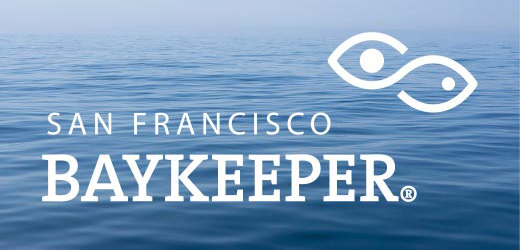The U.S. government has designated San Francisco Bay and Estuary as a Wetland of International Importance under an international treaty called the Ramsar Convention.
Ramsar Convention officials announced the inclusion of the Bay on February 1, in concert with World Wetlands Day. The designation helps raise awareness about the critical ecological services provided by the Bay's wetlands and can help advocates succeed in winning additional protections for the Bay.
The 1971 international treaty commits 164 countries to setting limits on damaging development along ecologically important waterways. Although being on the Ramsar list adds no regulatory protections, countries do commit to plan for the sustainable use of wetlands. Protection under the treaty emphasizes the importance of the Bay not just for the local Bay Area environment, but as a waterway that's critical for the healthy functioning of our planet.
The San Francisco Bay-Delta Estuary is the largest estuary on the Pacific Coast of the Americas, extending from the Golden Gate to the northern reaches of the Sacramento-San Joaquin Delta in the Sierra Nevada Mountains. It includes 77 percent of California's remaining wetland areas and is home to more than 1,000 animal species.
The recent addition of the Bay and Estuary was the result of years of effort by multiple organizations, in particular Audubon California and PRBO Conservation Science. Other Ramsar wetlands in California include Bolinas Lagoon, Grassland Ecological Area (San Joaquin River Basin), Laguna de Santa Rosa Wetland Complex, Tijuana River National Estuarine Research Reserve, and Tomales Bay.
Shortly after the Ramsar designation, California Senators Feinstein and Boxer announced two key bills in the U.S. Senate that would provide added designations and habitat restoration funds.
The first, the San Francisco Bay Restoration Act (S. 224), would amend the federal Clean Water Act to recognize San Francisco Bay as an ecosystem in need of special support, and provide up to $5 million annually in grants to improve habitat and water quality. Several other water bodies in the U.S. have received similar recognition and support, including Chesapeake Bay and Long Island Harbor; none are located west of the Mississippi River.
U.S. Senate bill 228 would establish the Sacramento-San Joaquin Delta as a National Heritage Area that would be managed by the existing Delta Protection Commission. As with the Ramsar designation, listing as a National Heritage Area does not provide additional regulatory protections, but Bay wetland projects would be eligible for matching funds from Congress and technical assistance from the National Park Service to support historic preservation, natural resource conservation, recreation, cultural tourism, and educational initiatives. There are 49 National Heritage Areas in the U.S., but none so far in California.
San Francisco Baykeeper supports these efforts to provide additional recognition and funding to protect and restore San Francisco Bay and its watershed. Passage of the federal bills will help complete major wetland restoration projects around Silicon Valley that are now on hold for lack of funds, and enhance water quality to help reverse the decline of species in the Bay. These efforts also provide national recognition that San Francisco Bay is a valuable natural resource in need of special support.
